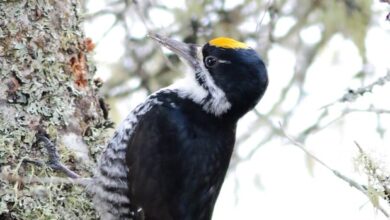Militant approach needed to control Canada goose population in border city, says expert
Managing Windsor’s population of Canada geese will require a militant effort over multiple years to truly make a dent in the number of the birds throughout the city. Dan Frankian of Hawkeye Bird and Animal Control Specialists, with over 36 years of experience managing animal populations, emphasized the need for diligence when dealing with Canada geese.
“They’re coming after you and you’re going after them, and we know how militant they can be,” Frankian told CBC. He highlighted the fact that Canada geese are often referred to as the “Canadian Air Force” for a reason, emphasizing their ability to be formidable opponents.
The City of Windsor has taken steps to address the issue by hiring a contractor to remove 150 eggs from seven nesting locations in Windsor. This method requires a permit from the federal government. The city also approved a $30,000 geese management strategy as part of its annual operating budget earlier this year.
Riverside-area councillor Jo-Anne Gignac spearheaded the push for action after hearing about a constituent’s harrowing experience with geese on the Ganatchio Trail. Geese crossing busy roads have led to collisions and injuries, prompting the need for a comprehensive management plan.
The federal government commended Windsor’s efforts as a good starting point, aligning with similar strategies implemented in other cities across Ontario. However, habitat modification and education remain crucial in mitigating human-goose conflicts.
Canada geese are prolific breeders, laying two to eight eggs per year. They nest in familiar areas for their entire lives, which can span up to 25 years. This consistent nesting behavior underscores the importance of proactive population control measures.
Frankian stressed the need to prevent the geese population from growing by applying oils to eggs to prevent hatching and destroying nests in front of the female goose. The goal is to deter the geese from nesting in the same location again, sending a clear message that humans pose a threat.
In addition to egg removal, Windsor has employed innovative tactics such as using dog-shaped cutouts and actual dogs to deter geese from popular park areas. The University of Windsor enlisted Winston, a St. Bernard-Mastiff mix, to chase geese off campus sport areas, effectively reducing the accumulation of “geese content.”
While dogs can be effective in deterring geese, Frankian recommended a multi-year effort that includes consistent tactics to outlast the geese. This may involve physical relocation of geese to other communities during molting season when they are flightless.
Ultimately, managing Windsor’s Canada geese population will require sustained effort and a strategic approach to ensure long-term success in reducing conflicts and protecting public safety. Through collaboration between the city, experts like Frankian, and innovative tactics like using dogs, Windsor can work towards achieving a balanced coexistence with these persistent birds.




